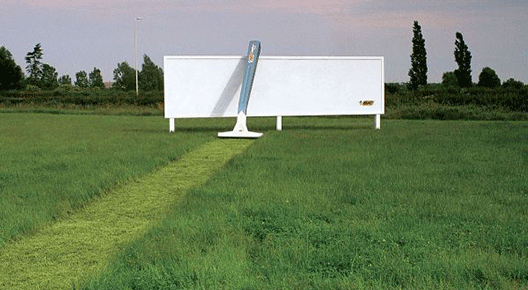
For creatives, our ideas are our business. A question we often need to address to ensure career success is: how do we make sure we continually and reliably come up with the goods? What if I told you that there is a proven method that greatly increases your chances of producing great new ideas?
The challenge to continually and reliably come up with creative ideas might also be important for business people (such as entrepreneurs). However, in this blog post I’ll explore a 5 Step Process to Producing Creative Ideas (with examples) that is intended for use by designers and other creatives (but I hope there are some insights for business people also!).
Scenario: Request for Creativity Under Time Pressure
It’s 10am and a new brief has just come in from the client. They’re counting on you to come up with a great idea that embodies the brand, looks great, is different from what they’ve used before and is to magically appear by next week.
Do you launch straight into Photoshop and start bashing out those ‘first cab off the rank’ ideas, or do you wait patiently for that perfect idea to appear out of nowhere? Well, an athlete doesn’t just run a sub-10 second 100 meter without training, right? The same rationale can be applied to the sport of design: you can’t come up with the best ideas unless you put in the work.
As a starting point, it’s imperative that you know your design brief inside and out. Ask questions so you have as much detail about the requirements of the design as possible. Then read this brief over and over, highlighting the most important part, or the SMT (Single Minded Thought). If you know your brief back to front, it’s in your mind for quick retrieval on the bus, in your sleep or in the shower. If there’s one thing we all know about ideas, it’s that they don’t wait patiently until you’re pen-poised between 9am and 5pm.
But there’s more to it than just understanding the brief.
I’ve watched some great art directors and designers at work, and it often seems as though the brief is in their hands for no more than two minutes when a great idea is cracked, then another two, just to show off. With experience, knowledge, a refined skill-set and practice over the years, the time it takes these guys to find a relationship between a fact and the brand is quicker than most, sometimes taking just moments.
Italian sociologist Pareto said that “an idea is nothing more nor less than a new combination of old elements.” If this is true, then surely having a file of these old elements at your fingertips or in a desktop folder would be helpful in creating new ideas.
The great creatives I’ve known all have such a file of ‘cool stuff’ that they save for the right brief. They truly live and breathe design and trends, and always have an eye open for a new font, color palette, artwork, photo, joke or copy line. This toolbox offers some peace of mind when that “I’ve seen something that would be perfect for this brief!” moment comes along. That something can quickly be accessed, and Pareto’s ‘new combination of old elements’ comes to life.
I personally subscribe to the method outlined by advertising success story James Webb Young in his book A technique for producing ideas. Young explains that “the production of ideas is just as definite a process as the production of Fords; that the production of ideas, too, runs on an assembly line; (where) the mind follows an operative technique which can be learned and controlled.”
He divides the ideas process into five ‘controlled’ stages. And it works. I’ve outlined the stages below:
Step 1 is to gather information. In the first stage, gather as much knowledge about the brand as possible. Find out who the consumer is, the history of the industry, specific points of difference between competitors, and how people react to the product or service. This process will “increase your chances of stroking new combinations, or ideas.”
Step 2 is the ‘working stage’. From stage one you should have a healthy stack of interesting facts and information about your client’s brand. Look at this information from different angles and under different lights. Pull them apart. Put two unrelated facts side by side and try to connect them.
Let’s have a look at a few examples:
Could the name of the product or service become the visual idea? That’s the approach taken by Fork & Knife’s logo:
Logo Design by BuckTornado
What benefits come with using the product? This Bic razor ad is a perfect example:
An idea might seem ridiculous or stupid, but write it down anyway. It could spark something later on.
Step 3 is about making no direct or conscious effort to solve the brief. If you’ve done the hard work, the data will be running around in your brain without you consciously helping it. The brain is most creative when it’s relaxed, so doing something restful and playful is encouraged. Carry a notepad around with you at this stage.
Step 4 is described by Young as the ‘Eureka’ stage, the moment when you think you’ve cracked the brief. At this stage you might also have two or more other ideas that are pretty good and worth recording.
Finally, step 5 is where you nurture your idea and bring it into the real world, “shaping the idea into practical reality” as Young says. It’s crucial to share the idea with others for critique. An idea won’t get any better if it’s kept in the dark. Be flexible until the very end. The best creatives are the ones who are not afraid to change the idea until it goes to print.
Conclusion
So no more finger-crossing and buddha-rubbing. Instead, use this practical and reliable process and some hard work to find a great idea for your client.
Written by: Angela Farrell
Source: Design Crowd



